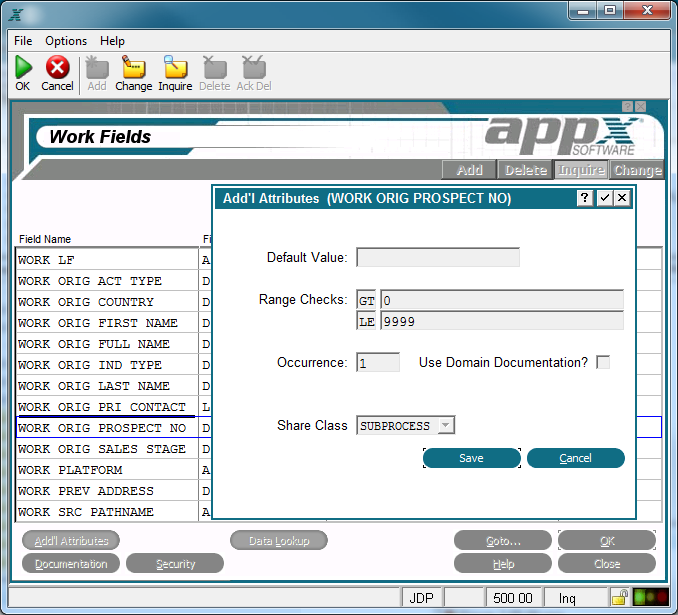Chapter 2-5: Work Fields |
Domain Work Fields (Numeric Domain) Add'l Attributes The Domain-Type Work field Additional Attributes overlay for numeric Domains is shown Domain Work Field Additional Attributes Overlay for Alpha, Text, Token and Date Domains. Upon completion, you are returned to the Numeric Domain-type work field specifications overlay.
Domain Work Field Additional Attributes Overlay for Numeric Domains The Additional Attributes overlay contains the following fields: Default Value establishes a modifiable starting value for all referenced fields whenever they are first displayed in add mode in an input image, unless modified by a user. If blank, there is no starting value displayed on the image. Range Checks defines a series of allowable values that APPX uses for online data validation.. The first component represents the relation. The options are EQ (equal to), NE (not equal to), GT (greater than), LT (less than), GE (greater than or equal to), and LE (less than or equal to). The second component represents the value that is assigned to the relation. If you enter two relations, APPX infers an AND relationship. Occurrence determines the number of times a field is present in a record. If blank, APPX assumes a value of 1. This field may contain up to five numeric characters and is restricted to a maximum of 32,767. See the Occurrence section for a more comprehensive discussion of this field. Share Class defines at what level the values contained in this work field can be shared. The Share Class options are: SUBPROCESS The values can be shared between a process and its subprocesses. RELATED The values can be shared among related processes in a job. DETACHED The values are available until the user logs off. NOT SHARED The values are available only for the current process. The default is SUBPROCESS. |
Application Design Manual "Powered by Appx Software"1045 ©2006 By APPX Software, Inc. All Rights Reserved |
